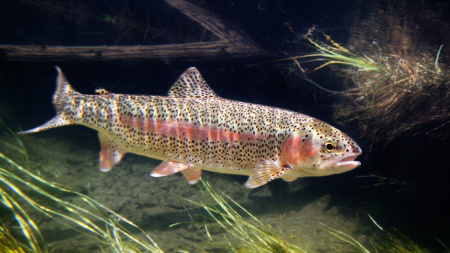
Innovative Restoration Along the Guadalupe River
by Jessica Calvillo
Cutting through the heart of San Jose is a 14-mile riparian highway known as the Guadalupe River. Like many of California’s waterways, the Guadalupe River has faced years of mismanagement such as the construction of narrow cement channels and sewer systems meant to control the river’s path. This has resulted in destructive floods and habitat loss for many native plants, birds, and the salmon who struggle to make the journey south to their ancestral spawning grounds. But times are changing and methods of smart floodplain mitigation have been catching on, and to the benefit of both people and the environment! Our team at Ecological Concerns Inc. is proud to be apart of that changing tide with a floodplain mitigation and revegetation project completed early this year along reaches 10B and 12 of the river.
Along with this uncemented portion of the river, our crew, led by project managers Jon Laslett and Garrick Hansen, were confronted by poor soil conditions, compaction, and a lack of native plant diversity. To deal with the compaction, large X-shaped trenches were dug along the banks of the river and were then filled with decompacted soil and biochar. These trenches were specially designed to absorb overland water flows before they reach the river.
Because our cement cityscapes are so impermeable, rivers like the Guadalupe can quickly become overwhelmed by runoff during large rain events and result in flooding. These innovative designs are crucial in tackling situations with multiple layers of challenges like this. In addition to water absorption, these well-draining trenches also serve as planters for native restoration plants like Cottonwood (Populus fremontii), Mule Fat (Baccharis salicifolia), Sandbar Willow (Salix exigua), and Wild Rose (Rosa californica). The trenches give the plants ideal soil in which to grow, eventually helping to decompact (fluff) the surrounding soil to oxygenate and encourage root growth, while also stabilizing the stream bank. Once these plants are established they will provide habitat to the wildlife communities we aim to protect.
Once the project came to completion, the sound of our heavy machinery came to a halt and the newly planted natives sunned themselves and stretched their roots into their new home. The many native vines, shrubs, and trees planted here may be small now, but in time will provide food and shelter to egar wildlife, like the Snowy Egrets who wade patiently on the rivers shore.

























